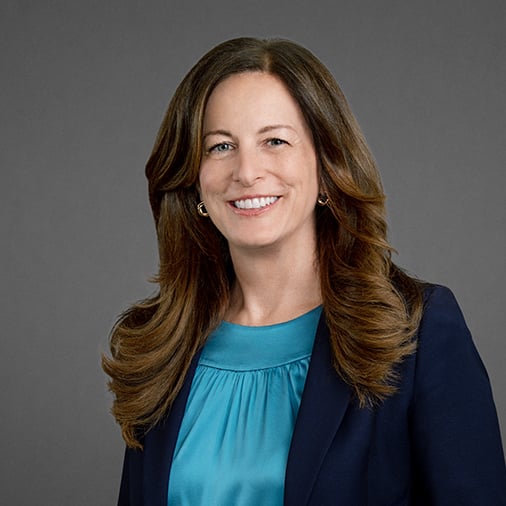
29 April 2025 • 36 minute read
Horizon – News and Trends in Sustainability Law

In this issue
Click each topic to jump to that section.
Trump Administration actions
Trump orders DOJ to stop states from enforcing unconstitutional or preempted climate laws. In a sweeping Executive Order (EO) issued on April 8, President Donald Trump has ordered Attorney General Pam Bondi to halt enforcement of state- and local-level laws, regulations, and causes of action “purporting to address ‘climate change’ or involving ‘environmental, social, and governance’ initiatives, ‘environmental justice,’ carbon or ‘greenhouse gas’ emissions, and funds to collect carbon penalties or carbon taxes.” Such laws, the EO says, may be unconstitutional, federally preempted, or otherwise unenforceable. The President stated in the EO that they “are fundamentally irreconcilable with my Administration’s objective to unleash American energy. They should not stand.” The EO specifically points to the climate superfund laws of New York and Vermont, which are described as “extortion,” and to California’s “impossible caps” on carbon use under its cap-and-trade statute, as well as state enforcement actions against oil majors seeking climate damages. The ambit of the EO is potentially much broader, however, directing Attorney General Bondi to identify unconstitutional, federally preempted, or otherwise unenforceable state and local ESG and climate laws across the country and to “expeditiously take all appropriate action to stop” their enforcement.
US Global Change Research Program eliminated, ending the National Climate Assessment. Among the thousands of grants, projects, and programs cancelled or frozen in recent weeks by the Trump Administration is all funding of the interagency US Global Change Research Program (USGCRP). The USGCRP’s legally mandated responsibilities include preparing an annual report to Congress outlining future priorities for federal global change research, and a quadrennial report, the National Climate Assessment, which summarizes the impacts of climate change on the US. That report is a pre-eminent source of scientific information that supports decision-making by governments, researchers, and businesses. Early this month, NASA cancelled its contract with ICF International, which convenes the USGCRP and coordinates the 15 federal agencies that contribute to the report. Before the contract was officially cancelled, staff from those 15 federal agencies who had taken part in the reporting were all told to end their work; USGCRP’s only remaining staff have been fired. One staffer stated, “The firing of USGCRP staff guts the entire climate research and services ecosystem.” The next assessment, due in 2027, would be the sixth. See the fifth National Climate Assessment here.
Reorganization of State Department will eliminate Special Envoy for Climate Change. The reorganization of the State Department will eliminate the senior diplomatic position of Special Presidential Envoy for Climate Change, a role charged with leading US diplomacy to address the climate crisis. Also to be eliminated in the reorganization – announced on April 22 by Secretary of State Marco Rubio – are the Office of Global Criminal Justice, which monitored war crimes and atrocities globally, and the Bureau of Conflict and Stabilization Operations, which worked to prevent new conflicts and secure US economic interests in strategic locations. Overall, the restructuring of State will eliminate 132 of its 734 bureaus and offices and about 700 employees.
Bessent charges IMF, World Bank with “mission creep,” demands “key reforms.” In an April 23 speech before the Institute of International Finance on April 23, Treasury Secretary Scott Bessent stated that the World Bank and International Monetary Fund “have enduring value, but mission creep has knocked these institutions off course.” Bessent called for “key reforms” to ensure that the “institutions are serving their stakeholders – not the other way around.” Bessent particularly criticized the IMF and World Bank’s “work on climate change, gender and social issues.” The Trump Administration will be “doubling down” in support for the institutions, he said, but expects “key reforms,” and will “demand that the management and staff of these institutions be accountable for demonstrating real progress.” Bessent’s speech came as the IMF and World Bank institutions prepared to kick off their spring meetings in Washington, DC, where they are headquartered. The US is the world’s largest shareholder in both institutions.
Administration says it is not currently planning to revoke green groups’ tax-exempt status. An Executive Order revoking the tax-exempt status of environmental nonprofits is not being readied “at this time,” a Trump Administration official told news sources on April 22. That statement came in the wake of reports the previous week indicating that the Administration is planning to revoke green groups’ 501(c)(3) status.
Visit our hub. For updates on breaking developments, see our hub, Navigating the presidential transition: Legal and regulatory insights.

Disclosures and voluntary reporting
California SB 253 requires large companies to report GHG emissions, and proposed SB 285 would limit how companies report CO2 removal under that law. The latest introduction to California’s growing suite of carbon reduction measures is SB 285, which would help the state attain its goal of carbon neutrality by 2045 by requiring that offsets counted for GHG emissions reporting under SB 253, the Climate Corporate Data Accountability Act meet certain requirements. The Act requires companies doing business in California with total annual revenues exceeding $1 billion to annually disclose their Scope 1, 2, and 3 GHG emissions starting in 2026 – see our ESG Calendar of key reporting deadlines below. SB 285 would allow only “qualified carbon dioxide removal” to be included when reporting offsets against those emissions. “Qualified carbon dioxide removal” must meet the following requirements: the CO2 removal process is not used for enhanced oil recovery; is consistent with California SB 905’s community protection principles; and, if requiring terrestrial biomass as a feedstock, the process only uses biomass from municipal organic waste or agricultural or forestry residues. Furthermore, the type of qualified CO2 removal must counterbalance the GHG emissions being neutralized in terms of atmospheric durability – for instance, CO2 emissions from long-term types of carbon storage, such as fossil fuels, could only be offset by durable, long-term carbon dioxide removal, such as direct air carbon capture and storage; CO2 emissions from trees – regarded as a short-term form of carbon storage – could be offset by a quicker solution like reforestation. SB 285, introduced to the California Senate in February, moved to the state Senate floor on April 2.
California legislature considers expanding disclosure requirements to capture state procurement. The California legislature is currently considering AB 755, the California Contractor Climate Transparency Act, which would significantly expand California’s extant disclosure rules by requiring “large” state contractors, defined as those with $25 million or more in state contracts, to annually report their climate-related financial risks and Scope 1, 2, and 3 GHG emissions, as well as their climate-related financial risks. “Significant” contractors, defined as those with $5 million to $25 million in state contracts, would need to annually report their Scope 1 and 2 emissions. An analysis released April 2 by the Governance & Accountability Institute noted that many government contractors operating in California are not required to report under the state’s existing disclosure laws - SB 253, the Climate Corporate Data Accountability Act, and SB 261, the Climate-Related Financial Risk Act; further, most of the large companies supplying goods and services to the state do not take part in voluntary reporting. Adding AB 755 to the state’s reporting arsenal would significantly expand the reach of the state’s disclosure requirements. State Senator Catherine Blakespear (D-Encinitas), who introduced the measure, stated, “California is the fifth-largest economy in the world, and we can’t tackle climate change without a clear picture of our own supply chain's impact on the environment.” The State of California, one of the world’s largest economies, spends more than $60 billion a year on procurement contracts.
Draft New York regulations would mandate GHG reporting by certain significant emitters. On April 8, the New York Department of Environmental Conservation (DEC) released draft regulations that would mandate GHG reporting by some significant emitters in the state. Earlier this year, Governor Kathy Hochul ordered the DEC to advance the regulations as part of a projected cap-and-invest system that will require large emitters to counterbalance the emissions they generate, beyond an allowed volume, by purchasing allowances. Over time, the allowed volume would decline. The draft regulations, DEC is noting, simply require reporting of emissions and would “not impose requirements for facilities to reduce GHG pollution or to obtain emission allowances.” Annual reporting would be required of an array of infrastructure facilities in New York that emit over 10,000 metric tons of CO2 a year, such as electric power plants, natural gas compressor stations, and landfills. Reporting would begin in 2027 on 2026 data. DEC Acting Commissioner Amanda Lefton stated that the reporting requirements will help to “fill the data gaps left behind by proposed federal rollbacks.”
Canadian securities regulators “pause” development of climate disclosure rules. On April 23, the Canadian Securities Administrators (CSA), Canada’s umbrella organization for provincial and territorial securities regulators, announced that it is “pausing” the developments of new rules that would mandate climate disclosures and amplify diversity-related disclosures. Stan Magidson, chair of the CSA and chair and CEO of the Alberta Securities Commission, stated that the CSA paused its work on such rules “to support Canadian markets and issuers as they adapt to the recent developments in the U.S. and globally.” In December 2024, the Canadian Sustainability Standards Board (CSSB) issued voluntary disclosure standards for reporting sustainability and climate performance, but, without implementing rules from the CSA, such reporting will remain voluntary. The CSA stated that it “expects to” revisit the rules “in future years.”
European Parliament stops the clock on key reporting requirements. On April 3, the European Parliament approved the so-called stop-the-clock directive, delaying the implementation of key sustainability reporting and due diligence requirements set out in the EU’s Green New Deal – the Corporate Sustainability Reporting Directive (CSRD); the Corporate Sustainability Due Diligence Directive (CSDDD); the EU Green Taxonomy, and the Carbon Border Adjustment Mechanism. The measure was approved by an overwhelming 531 – 69 vote. In February, the European Commission released its Omnibus I package, intended “to simplify EU rules, boost competitiveness, and unlock additional investment capacity.” The stop-the-clock directive was proposed at the same time in hopes that swift adoption of the delays would provide companies with regulatory certainty.
Just a few days before, in a sign that the EC intends to move forward swiftly with the changes, the European Financial Reporting Advisory Group (EFRAG) was told to fast-track the development of simplified European Sustainability Reporting Standards under the CSRD. The goals of the update are to maintain alignment with global standards while reducing reporting burdens – setting out clearer materiality guidance in a simpler structure, with fewer mandatory data points, a simpler structure, and better interoperability. EFRAG must submit its proposed revisions to the EC by October 31, 2025 – only seven months away. With that compressed timeline, the EC hopes the new standards will be ready for reporting in FY 2027, and potentially even for FY 2026.
Australia: Fresh guidance on mandatory climate reporting. The Australian Securities and Investments Commission (ASIC) has released Regulatory Guide 280, setting out additional guidance on the country’s mandatory climate disclosures, including clarifications on reporting Scope 3 emissions. Reporting begins in July this year for companies operating in Australia with over 500 employees, revenues exceeding $500 million, or assets above $1 billion, and for asset owners managing assets over $5 billion. Regulatory Guide 280 features guidance on climate scenario analysis and scope 3 emissions disclosure, clarifications on applying sustainability reporting thresholds, and specific instructions for directors of reporting entities.
Greenwashing
Oregon Supreme Court sends Tillamook greenwashing case back to the trial court. Reversing a lower court finding, on March 31 the Oregon Supreme Court allowed a putative class action suit against the nationally known Tillamook County Creamery Association, Oregon’s largest dairy, to move forward. The suit, brought by the Animal Legal Defense Fund on behalf of a group of Oregon consumers, alleges that Tillamook violated Oregon’s Unlawful Trade Practices Act by advertising that the milk the company uses to make its premium ice creams and cheeses comes from “small, idyllic” family farms in Tillamook County. The company’s advertising, the plaintiffs stated, “pervasively shows cows in open-air barns or on fresh, green pasture. They are shown being given personalized attention by the owners of these small farms and their families.” In fact, the four plaintiffs charge, two-thirds of the milk the company uses is produced at a single massive industrial dairy in eastern Oregon. The consumers also claimed they had suffered financial losses by purchasing Tillamook products, which are sold at “premium” prices. The court stated, “It may be true that consumers who did not rely on Tillamook’s alleged misrepresentations were not deceived, but it does not necessarily follow that none of them suffered an ascertainable loss – at least if plaintiffs’ premium-price theory can be economically proven.” The Court’s ruling does not address any of the plaintiffs’ greenwashing claims, nor does it certify a class – it simply reverses the 2022 Oregon Court of Appeals finding that the plaintiffs could not show they had been misled. Bohr v. Tillamook County Creamery Assn. now goes back to the trial court.
Canada: final version of Draft Guidelines on environmental claims expected in June. On December 23, 2024, the Competition Bureau issued proposed Draft Guidelines on environmental claims and the Competition Act. After an extensive public consultation, the final version is expected to be published in June 2025. The Draft Guidelines take into account the cumulative effect of the Act’s general deceptive marketing provisions and new greenwashing provisions introduced by amendments in June 2024. Those new provisions impose positive duties on persons making environmental claims to support them by testing or to substantiate them against internationally recognized standards.
Six principles emerge in the Draft Guidelines for compliance when making environmental claims in marketing and promotional representations: be truthful, and not false or misleading; claims about the environmental benefits of a product and performance claims should be adequately and properly tested; be specific about what is being compared when making comparative environmental claims; avoid exaggeration; be clear and specific – not vague; and environmental claims about the future should be supported by substantiation and a clear plan. The Draft Guidelines also confirm that, under the legislation, the general impression conveyed will be considered and not simply the specific language used. Businesses may continue to avail themselves of the partial due diligence defense set out in section 74.1(3) of the Act.
One of the new greenwashing provisions would require that claims about the environmental benefits of a business or business activity have “adequate and proper substantiation in accordance with internationally recognized methodology.” The Draft Guidelines indicate that the Bureau will likely consider a methodology to be internationally recognized if recognized in two or more countries and it need not be recognized by the governments of those countries. The Draft Guidelines note that businesses are not required to publicly disclose the information that substantiates the environmental claims.
It should be kept in mind that while Bureau guidelines are often informative and persuasive, they are not binding on the Bureau, private parties seeking to enforce the Act, or the courts.
Flixbus fined for greenwashing claims. The German Federal Court of Justice has fined Belgian coach transport company Flixbus for making misleading environmental claims on its Belgian website. Flixbus had advertised its buses as "the most environmentally-friendly means of transport," said Belgium’s Economy Ministry, but has not provided the required consumer information to support those claims, “which could mislead consumers as to their real meaning and environmental impact.” The company also advertised the environmental advantages of the Flixtrain, a long-distance railway passenger train operating in Germany, on its Belgian site, and offered an option for offsetting CO2 emissions, but without being transparent about the actual emissions that would arise from travel. An investigation by the Belgian Economic Inspectorate concluded that by making these claims, Flixbus was greenwashing. The Belgian Economy Ministry gave Flixbus the opportunity to voluntarily adapt its site but, reportedly, it did not make appropriate changes. The Belgian Economic Inspectorate then contacted its German counterpart, the Umweltbundesamt, which initiated legal proceedings. Flixbus, based in Germany, offers low-cost intercity transportation in Asia, Europe, North America, and South America.
Navigating greenwashing claims: trends shaping 2025 litigation risks. Greenwashing class action claims continue to rise in the US and internationally, with increased threats across industries ranging from consumer goods to financial services. Our January 29 webinar explored such litigation claims and discussed DLA Piper’s Greenwashing Litigation Tracker. For those interested in receiving information regarding the presentation, please reach out to Carolyn Hennessey.

Sustainability: Regulatory
Congress repeals energy efficiency standards for commercial refrigerators. On April 3, the US Senate voted 53-42 to repeal energy efficiency standards for commercial refrigerators. The House had passed the same measure on March 31. Affected are refrigeration systems used by distributors, grocery stores, food processors, restaurants, and food banks. Congress has the ability under the Congressional Review Act to overturn agency rules and standards; the standards in question were finalized by the Department of Energy in the last days of the Biden Administration. Worldwide, about 20 percent of all GHG emissions are produced by cooling, a category that includes air conditioning and refrigeration across all sectors. About two-thirds of those emissions come from energy use, while the other third stem from use of hydrofluorocarbons (HFCs) – coolant chemicals that are hundreds of times more potent than CO2. Earlier this year, EPA Administrator Lee Zeldin said he is “reconsidering” the Technology Transition Rule, created to phase out use of HFCs over time.
Newsom, McGuire, Rivas will ask California legislature to extend cap-and-trade program. A week after President Donald Trump issued an Executive Order aiming to stop states from enforcing climate laws, California Governor Gavin Newsom, joined by the state Senate’s president pro tem, Mike McGuire, and Assembly Speaker Robert Rivas, announced that they intend to ask the state legislature to extend the state’s long-running cap-and-trade emissions program. That program, proposed and then signed into law in 2006 by Governor Arnold Schwarzenegger, expires in 2030. In the decade leading up to 2024, California funded $28 billion in “climate investments” through the program, broadly ranging from wildfire prevention and environmental restoration to low-carbon transit and electric vehicle rebates. The program also funds the California Climate Credit, which is applied to state residents’ electric and gas bills twice a year. (The average credit on April bills will be $137.) Notably, in their announcement, Newsom, McGuire, and Rivas took a defiant tone: their announcement, for instance, is titled Governor Newsom, Legislature double down on state’s critical cap-and-trade program in face of federal threats.
Some US states move against renewables. Texas legislators have introduced dozens of bills during the current legislative session aiming to derail or restrain new renewable energy projects and to set permitting requirements that are stricter than those for fossil fuel projects. Among them is SB 819, a measure, originally introduced in 2023, that would impose sweeping rules on new utility-scale wind and solar electricity generation projects in Texas. SB 819 has moved out of committee to the Senate floor. Texas is the US leader, by far, in renewable energy production, having greater solar power capacity than California (18,000 MW compared to California's 17,000 MW); last year, the state added more solar and battery storage capacity to its power grid than any other energy source.
Other states are also seeing moves against renewables projects:
- Arizona’s House in February approved HB 2223, which would forbid wind farm projects within 12 miles of any property zoned for residential use. That restriction would affect about 90 percent of Arizona land.
- In Missouri, a bill introduced in the current legislative session would tax farmers who participate in wind or solar energy projects, for instance by leasing their land for a solar panel farm. Farmland used for such purposes would be reassessed as commercial land, nearly tripling the tax assessment rate from 12 percent to 32 percent.
- North Carolina’s HB 729, introduced April 2, would disincentivize new solar energy projects by cutting their tax abatements from 80 percent to 40 percent of appraised value and creating new regulatory requirements – for instance, forbidding the North Carolina Utilities Commission from approving a utility-scale solar project if it is to be built on land currently used for horticultural or agricultural production.
- In New Hampshire, four relevant bills have been introduced to the legislature: HB 682, to remove the Office of Offshore Wind Development from the Office of Energy Innovation; HB 575, to prohibit all offshore wind development in the state; HCR 4, to reject all offshore wind projects; and HB 219, to phase out New Hampshire’s minimum electric renewable portfolio standard.
- In Ohio, a 2021 law allowed county commissioners to create restricted areas where utility-scale solar and wind projects cannot be built; since then, 26 counties have banned renewable energy projects. Furthermore, a bill introduced in the Ohio House this year, HB 15, the Amend Competitive Retail Electric Service Law, would end all state subsidies for solar projects.
- This year, Oklahoma Attorney General Gentner Drummond has repeatedly spoken and posted about the “green energy scam.” His office has launched a web page explaining how Oklahomans may oppose wind farm projects.
Oregon EPR reporting grace period announced. Circular Action Alliance (CAA) recently announced a grace period through April 30, 2025 for producers to report data by weight and material category for all packaging, paper, and food-service ware items sold to consumers or businesses in Oregon. Data reported by April 30, 2025 will affect CAA’s fee rate calculations for Oregon, and CAA has indicated that the more total material in each category is reported, the lower the fee for that category will be. See our alert.
Colorado redefines nuclear energy. Colorado Governor Jared Polis has signed HB25-1040, which redefines nuclear as a “clean energy resource” eligible to contribute to the state’s 2050 net-zero emissions goal. The measure, signed on April 1, had been opposed by an array of environmental groups, which urged the governor to veto it. Colorado at present does not have any nuclear power plants. HB225-1040 opens the door for future fission-based power projects to obtain local grants – which before this were reserved for carbon-free energy sources like solar and wind. In recent years, similar Colorado legislation had failed. But, this year, in a sea change, powerful Democratic legislators agreed to be its co-sponsors, in part because it could complement wind and solar production to ensure a stable 24/7 electricity supply and because it could create jobs and tax revenue in Colorado communities where aging coal-fired plants are slated to close in the coming years.
Carney ends Canada’s consumer carbon tax. In his first act in office, Canadian Prime Minister Mark Carney cancelled the federal consumer carbon tax. Announcing its demise, he stated, “This will make a difference to hard-pressed Canadians, but it is part of a much bigger set of measures that this government is taking to ensure that we fight against climate change, that our companies are competitive, and the country moves forward.” The carbon tax in Canada operated as a federal backstop, meaning that if a province or territory failed to implement its own carbon pricing system, the federal government system would apply. Accordingly, a number of provinces and territories remained subject to the federal carbon tax. Certain other provinces and territories, such as British Columbia, implemented their own provincial carbon tax system in place of the federal carbon tax. As of April 1, 2025, the federal carbon tax was no longer being added at the pump everywhere in Canada except Quebec. Quebec has its own carbon pricing regime, independent of the federal carbon tax, which currently remains unchanged. British Columbia followed Carney’s removal of the federal backstop by ending its carbon tax after a marathon late-night legislative session ending at 1:30 AM April 1. The federal tax, instituted under Prime Minister Justin Trudeau in 2019, was created to incentivize businesses and individuals to change their consumer behavior – to use less fossil fuel and transition to greener forms of energy. In 2019, it was set at $20 per tonne in 2019, with annual rises. By 2030, it would have reached $170 per tonne. The most immediate outcome of the cancellation: lower prices at the pump – in British Columbia, for instance, the carbon tax added 17.61 cents per liter – as well as no more climate action tax credit and no more quarterly carbon rebate payments. Longer-term ramifications, such as whether the next government will focus climate efforts on large industrial emitters, remain unclear. During his campaign, Carney stated that “Canada’s biggest emitters will contribute their fair share.” Canada’s carbon price on businesses remains in place at the present time. Pierre Poilievre, the leader of the opposition, is opposed to the carbon tax on business.
Chile’s extended producer responsibility regulation. Chile’s EPR regulation, enacted in 2016, has been implemented in stages according to product types. Producers may create individual or collective compliance systems for waste management, but some have noted the efficiencies in joint efforts. As producers collaborate to meet recycling and sustainability targets, there is a risk that these agreements could facilitate anticompetitive practices. Find out more in the latest issue of our newsletter Juntos.
Sustainability: Litigation
Indefinite stay granted in SEC climate rules litigation. On April 24, the Eighth Circuit Court of Appeals granted a Motion to Hold in Case Abeyance in Iowa v. SEC, the litigation challenging the SEC’s climate rules. This decision pauses the current litigation until further notice of the court and therefore leaves open the possibility that the rules could be made active again under a future administration. The motion, which was opposed by the petitioners challenging the rules, was brought by a group of 18 intervening states and the District of Columbia. As we explain in our alert, “SEC climate rule litigation update: Is it actually over?”, while it is likely that the Trump Administration SEC will continue to voluntarily stay the rules, they still remain law at this time. The court directed the SEC to file a status report in 90 days advising whether it intends to review or reconsider the rules, and their future remains uncertain.
New York sued over its climate laws. New York state is facing litigation over its two key climate laws – the Climate Leadership and Community Protection Act of 2019, S 6599, and the 2024 Climate Change Superfund Act, S 2129-B/A 3351-B. In February, we reported that 22 Republican state attorneys general, led by West Virginia Attorney General JB McCuskey and joined by two energy trade groups, had sued New York state to overturn its Climate Change Superfund Act. That case is still in its early stages. On March 31, a coalition of nonprofit environmental groups filed suit against the New York State Department of Environmental Conservation (DEC) alleging that the state has failed to implement the Climate Leadership and Community Protection Act, S 6599, in a timely manner. S 6599 requires that the state reduce its GHG emissions 40 percent by 2030 and 85 percent by 2050 compared to 1990 levels, and it mandates the DEC to, by January 1, 2024, promulgate implementing regulations that will guide the reduction of GHG emissions and air pollution across the state and that will establish a New York state cap-and-invest program. DEC has not issued such draft regulations. Last year it announced that it would release the regulations this year. It has not. The plaintiffs charge that the state has “reversed course and made it clear that the draft regulations would not be released this year,” nor has the agency said when the regulations may be issued. Invoking the “right to clean air and water, and a healthful environment” set out in the state constitution, the plaintiffs are calling on the New York State Supreme Court for Albany County to declare that DEC has violated S 6599 and the state constitution and to require DEC to issue draft promulgating regulations “immediately,” and finalize them “on a reasonable timeline, without delay.” This litigation, too, is in its earliest stages. The case is Citizen Action of New York, PUSH Buffalo, Sierra Club, and WE ACT for Environmental Justice v. New York State Department of Environmental Conservation.
Lawsuits over frozen green funding advance. On April 15, the US District Court for the District of Rhode Island told the EPA, the Departments of Energy and Interior, and other federal agencies to immediately resume disbursing climate and infrastructure funds granted under the Inflation Reduction Act (IRA) and the Bipartisan Infrastructure Investment and Jobs Act (IIJA). The case is one of several arising from EPA Administrator Lee Zeldin’s move in February to freeze the disbursement of billions in funding for an array of green financing and infrastructure projects; Zeldin repeatedly characterized those projects, and the entities that were to receive the funds, as spendthrift “gold bar” schemes riddled with “waste, fraud, and abuse.” The Rhode Island court, in its order, stated that the President does not have “unfettered power to hamstring in perpetuity” duly passed funding laws. It then ordered the agencies to “take immediate steps to resume the processing, disbursement, and payment of already-awarded funding,” and to report to the court on their progress by 5 pm April 16. Notably, while this case was brought by three Rhode Island nonprofits, the court applied its order to all IRA and IIJA grants nationwide, stating, “It would be anathema to reasonable jurisprudence that only the named Nonprofits should be protected from the irreparable harms of the likely unlawful agency actions.”
The Rhode Island decision comes as other lawsuits – over frozen funds granted through the Greenhouse Gas Reduction Fund (GGRF) – move forward. The GGRF was created under the Inflation Reduction Act, its website states, “to mobilize financing and private capital to address the climate crisis, ensure our country’s economic competitiveness, and promote energy independence while delivering lower energy costs and economic revitalization.” In one of those cases, a coalition of three nonprofit green banks – Climate United Fund, the Coalition for Green Capital, and Power Forward Communities – is suing the EPA, EPA Administrator Lee Zeldin, and the bank holding the frozen funds, charging that they illegally denied the groups access to $14 billion awarded them last year. The freeze, the plaintiffs state, has prevented them from financing new projects and has caused them “irreparable harm.” In a recent hearing, the court noted that the EPA had never provided any proof for its repeated claims that the green banks had engaged in fraud. On April 16, the US District Court for the District of Columbia issued a preliminary injunction barring the EPA from “unlawfully suspending or terminating” the grants and ordering the funds to be disbursed to the three green banks. Immediately after the injunction was issued, the Department of Justice appealed the ruling to the US Court of Appeals for the District of Columbia Circuit.
Additional litigation regarding frozen GGRF funds is a consolidated case led by the state of Minnesota and joined by California, Illinois, and Maine, where the states’ green banks are similarly seeking the release of billions in frozen funding intended for green energy projects. In this litigation, the states argue that in refusing to release congressionally appropriated funds, the defendants have violated the Administrative Procedures Act, which sets out the procedures federal agencies must follow in decision-making, and the Impoundment Control Act, which prohibits a president and any other government officials from refusing to release congressionally appropriated funds. Observers appear to expect that this case, too, may be protracted. In the meantime, Minnesota’s green bank, the Minnesota Climate Innovation Financial Authority, is continuing to advance its loan applications, using state funding, with the expectation that the $25 million in federal funds at question will eventually be released.

Supply chain integrity
New York: Tropical Rainforest Economic & Environmental Sustainability Act is introduced. Also introduced this month to the New York legislature is S 7203, the Tropical Rainforest Economic & Environmental Sustainability Act, which would amend state finance law to “ensure companies contracting with the state are not contributing to tropical forest degradation or tropical deforestation directly or through their supply chains.” State contractors would be required to certify compliance through due diligence measures, and large contractors would be required to adopt a comprehensive tropical forest policy. The bill would achieve that first by setting out protections for tropical hardwoods and tropical forests – for instance, with certain exceptions, it would prohibit “use of any tropical hardwood or tropical hardwood product as part of the construction, renovation, maintenance, or installation of any public work, building or other structure” in New York state. S 2703 includes a list, to be updated every three years, of numerous tropical hardwood species that it would protect. Under the measure, when a contract “includes the procurement of any covered tropical forest-risk product types,” the contractor would be required to certify that those products were not “extracted from, grown, derived, harvested, reared, or produced on land where tropical deforestation or tropical forest degradation occurred” on or after January 1, 2023. In addition, S 7203 would establish a “supply chain transparency assistance program” that would “assist small and medium-sized businesses and minority and women-owned businesses in achieving compliant supply chains.” This bill is in the earliest legislative stages.
Administration eliminates grants to international programs fighting child labor, forced labor. The Department of Labor’s Bureau of International Affairs (ILAB) has reportedly terminated more than $500 million in grants to 69 global programs, many of them congressionally authorized, that fight forced labor, child labor, and human trafficking around the world. These programs supported foreign governments in ensuring their compliance with the labor standards set out in US trade agreements. Tweeting on X on March 29, the Department of Government Efficiency (DOGE) hailed the cancellation of “$577M in ‘America Last’ grants” and praising the “great work” of Labor Secretary Lori Chavez-DeRemer and Deputy Labor Secretary Keith Sonderling.
Sustainability in financial services
Climate Safe & Responsible Bank Procurement Act introduced in New York legislature. Bill A7688, the Climate Safe & Responsible Bank Procurement Act, would amend the New York State finance law to establish standards for the purchasing of bank services by state agencies, with a focus on climate-related considerations. More specifically, it would require New York state agencies to consider a list of climate-related criteria that the agencies would be required to weigh positively when selecting which bank’s banking services (eg, depository services, issuing credit cards, credit card processing) to use. It would also prohibit New York state agencies from contracting with a bank for underwriting in a bond issuance or refinancing if it does not meet certain climate standards. In this context, “bank” is defined broadly to include any bank (but not trust companies) subject to New York regulation (eg, state-chartered banks, foreign banks with New York branches) as long as it has at least $100 billion in total consolidated assets.
OCC withdraws climate risk guidance for large financial institutions. The Office of the Comptroller of the Currency has withdrawn interagency guidance regarding climate-related financial risk management for large financial institutions. In a March 31 announcement, Acting Comptroller of the Currency Rodney E. Hood called the guidance “overly burdensome and duplicative.” The guidance, issued in 2023 by the OCC, FDIC, and Board of Governors of the Federal Reserve, required financial institutions managing over $100 billion in total assets to integrate climate-related financial risk consideration into their governance, policies, strategic planning, risk management, data, and reporting and scenario analyses. Hood stated that banks were already required to maintain a sound risk management framework that “includes potential exposures to severe weather events or natural disasters.”
New strategy for Japan’s pension fund emphasizes sustainability. Stating that addressing environmental and social challenges enhances market stability and improves long-term returns, the Government Pension Investment Fund (GPIF) of Japan has announced a new investment strategy emphasizing sustainability, risk reduction, and long-term value creation. The GPIF manages more than US$1.7 trillion in assets – it is the world’s largest pension fund. In a policy document, the fund said, “GPIF does not make investments solely for the purpose of creating impact. But reducing sustainability-related risks is essential to deliver stable, long-term returns.”
China launches yuan-denominated sovereign green bond. Exploiting the US retreat from green finance, China this month launched a yuan-denominated sovereign green bond on the London Stock Exchange. The bond, valued at US$824 million, is being seen as a significant milestone in China’s efforts to attract global investment for its clean energy and low-carbon initiatives. It is one part of China’s wide-ranging ”dual-carbon” strategy – sweeping plans to achieve peak CO2 emissions before 2030 and carbon neutrality before 2060. The choice of London as the listing venue strengthens China’s financial ties with the UK.

Sustainability in the marketplace
Dow seeks approval to build four nuclear reactors at Texas facility. Long Mott Energy, a subsidiary of Dow Inc., has submitted its application to the US Nuclear Regulatory Commission (NRC) for a construction permit to build four next-generation nuclear reactors at a manufacturing complex in Seadrift, Texas. The reactors would replace the facility’s present natural gas and steam generation NOUN. The NRC says that should the project be approved and built, it would be the first commercial advanced nuclear power plant for an industrial site in the US. Long Mott Energy hopes to receive approval for Xe-100s, advanced small modular reactors built by X-energy. Increasingly, industries and governments around the world are expressing interest in such smaller modern “next-generation” nuclear reactors as carbon-free energy sources. At the 4,700-acre Seadrift complex, Dow manufactures a variety of products, among them plastics, polyester fabrics, glycols for antifreeze, and oxide derivatives for health and beauty products.
Emissions cut by 50 percent since 2005 in covered sectors via EU’s Emissions Trading System. The title of a report issued this month by the EU’s Directorate-General for Climate Action says it all: “EU Emissions Trading System has reduced emissions in the sectors covered by 50% since 2005.” Data for 2024 reported to the EU ETS by the March 31, 2025 deadline revealed a 5 percent reduction in emissions last year. The report stated, “With this development, ETS emissions are now around 50% below 2005 levels and on track to achieve the 2030 target of -62%.” The EU ETS, the world’s first carbon market, covers GHG emissions from about 10,000 manufacturing and energy installations as well as certain aircraft operators; since 2024 it has also covered maritime transport. The power sector, the report found, was the most important driver of lower emissions in 2024, cutting emissions from electricity production 12 percent below 2023 levels, a change ascribed to producing more electricity from renewables and nuclear and less from fossil fuels. Total electricity production was also consistent year on year. In the aircraft sector, tracked emissions increased, a rise attributed in part to broader reporting requirements. See the concise report here.
Aiming for net zero, IMO members agree to a global carbon fee and legally binding fuel standards for ships. On April 11, International Maritime Organization (IMO) member nations agreed to implement a global pricing mechanism for carbon emissions from ships, and to legally binding targets for such emissions: a 20 to 30 percent reduction in GHG emissions by 2030, a 70 to 70 percent reduction by 2040, and net-zero “by or around” 2050. The targets are set out in draft regulations amending Annex VI of the International Convention for the Prevention of Pollution from Ships’ Annex VI (MARPOL VI), which addresses air pollution from ocean-going ships. With this move, IMO has succeeded in creating the first global climate mandate for an entire industry and the first UN-administered carbon revenue system. The two-tiered carbon pricing mechanism will penalize ships for GHG emissions that exceed their annual allotment. Ships in the lower tier will pay $100 per ton of CO2 for moderate non-compliance; ships in the upper tier will pay $380 per ton. The maximum level of permitted emissions intensity is scheduled to tighten every few years. The IMO stated that the measures “will become mandatory for large ocean-going ships over 5,000 gross tonnage, which emit 85% of the total CO2 emissions from international shipping.” About 3 percent of global CO2 emissions arise from shipping.
The lead-up to this agreement has been long: deliberations by the Marine Environment Protection Committee began in 2015. In the April 11 vote during the Committee's 83rd meeting, the new framework was approved by 63 nations, among them Canada, China, the EU member states, and India. Among the countries opposing it were Saudia Arabia and Russia. Twenty-five countries, including island nations that had urged a far stronger agreement, abstained. The United States left the negotiations before the vote occurred, sending a diplomatic note afterward warning that it would take “reciprocal measures” to compensate for any fees charged to US ships under the proposed framework. According to the Center for Maritime Strategy, there are currently 178 US-flagged cargo ships, representing 0.57 percent of the world’s commercial shipping tonnage. Next, the IMO will formally circulate the MARPOL VI draft amendments to IMO member states. In October 2025, the amendments will be adopted during an extraordinary session of the Marine Environment Protection Committee. Detailed implementation guidelines will be approved in spring 2026, and the regulations are expected to enter into force in early 2027.

Calendar
Key global reporting deadlines
Click on each icon to learn more.
Coming events
- The Conferences of the Parties to the Basel, Rotterdam, and Stockholm conventions is meeting through May 9 in Geneva.
- The 2025 UN Ocean Conference will be held June 9-13, 2025 in Nice.
- The 13th International Conference on Sustainable Development will take place September 10-11, 2025 in Rome.
- Climate Week NYC will take place September 21-28, 2025 in New York City.
- The 2025 United Nations Climate Change Conference (COP 30) will be held November 10-21, 2025 in Belém.







